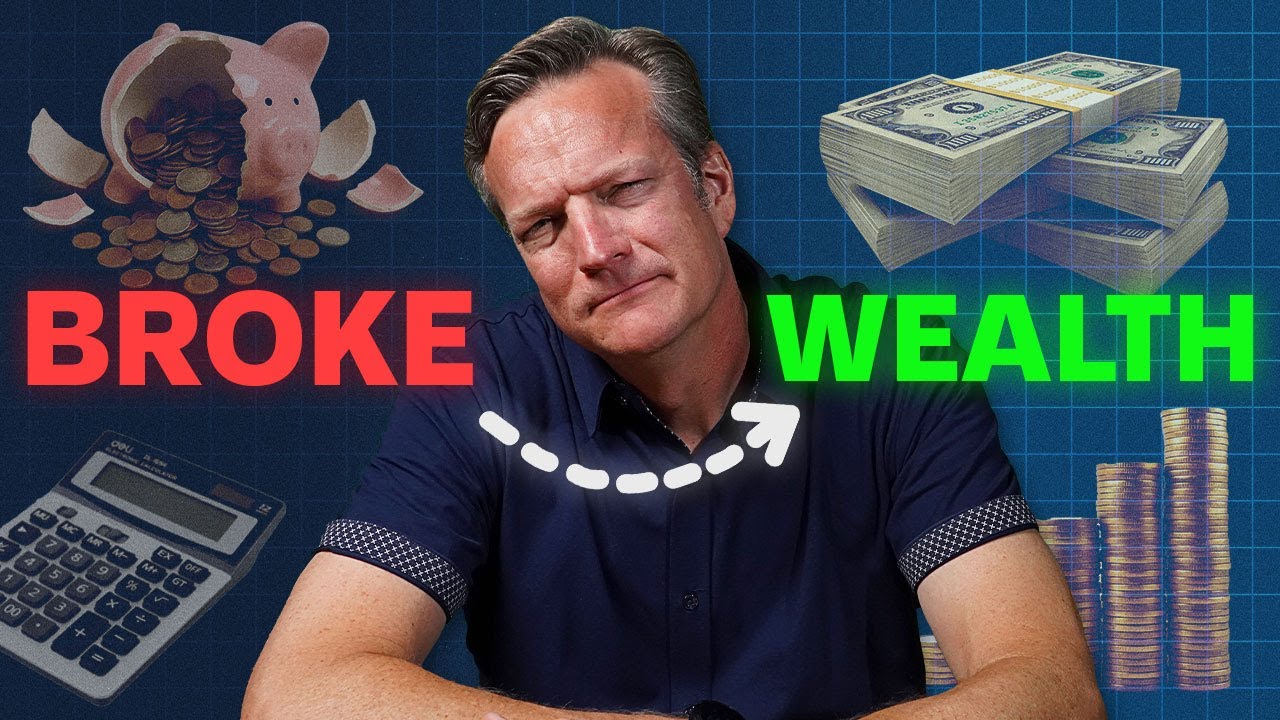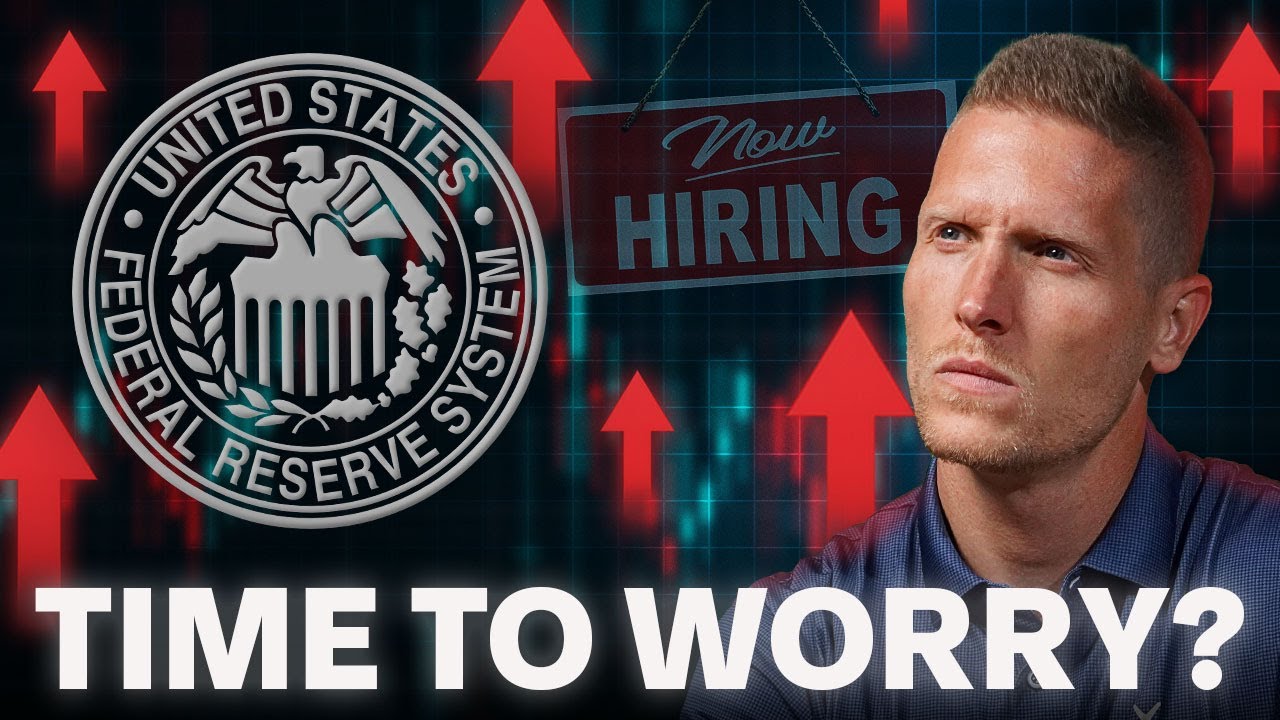Did we hit the market bottom? Investors, beware! Ruby, I am so excited about this show because I love when we get to talk about investing. And here's what's really interesting about investing: it is amazingly simple, but it's not easy, no. If you think about these past couple of years that we've recently come through, being an investor has not necessarily been the easiest thing in the world to do, right? So, you know, is the bear market over? We've seen some tough stuff in the market which we're going to cover. It might seem to be recovering, so I'm looking forward to hearing from you: what is actually happening and what does this mean for my money?
Yeah, I think a lot of people are asking this question. You know, we know that last year wasn't great; this year feels a lot better. So, the question to me immediately becomes: where are we in this cycle? Or if we're gonna appropriately approach that, let's talk about where we've been. So, if we think about last year, if we look at calendar year 2022 and we just measured the S&P 500 (500 largest companies in the United States), we had a market high on January 3rd. The market hit an all-time high at the very beginning of the year, and from that time (January of last year), it just precipitously dropped, right? It was not a great year. Yes, we actually hit the very bottom of the market on October 12th, and that was a 27% loss at that time. So, intra-year, with a 27% loss, and then the market came back in the fourth quarter to where we only lost 19%. So, it was pretty painful if you were someone out there looking at your account statements, checking your reports, looking at your accounts. You're like, "Man, this stinks. This is painful. This is not a lot of fun."
Well, then we fast forward into 2023, and this year's looked a lot different. We started in January, and since then, the market has continued to trend higher and higher and higher. And as of this recording in the middle of July, the market is up almost 16% so far this year. So, we don't know what the rest of the year is going to look like necessarily, sure, but we know it's feeling pretty good so far. Absolutely. And this is... I mean, it's always good to look at a year and review and be like, "Hey, this is feeling strong. This is feeling like we're on the right path. We're off to a good start for this year." But what does this mean for the overall bear market and like the big picture? So, are we actually officially in recovery? What do you think?
Yeah, so let's think about it. So, if we're going to answer the question, one of the really interesting things about defining bear markets and defining bull markets always has to happen in hindsight. You always have to kind of look backward. So, let's look. If we just recently came through a bear market, let's look at the statistics right now. If we're measuring that bear market as starting in January and then ending in October, it lasted for about nine months. The total drawdown was about 27% in terms of the largest drawdown. But since that bottom, since October, the market has recovered about 25%. So, we're not necessarily back to break even, but we're really, really close. We're getting really close to where we were in January of last year. So, a lot of people are thinking, "Okay, okay, yeah, this counts as a recovery. If we've made back more than 20% at this point, maybe this even qualifies as a bull market." So, when someone says, "Are we out of the bear market?" I think we've had enough pause to performance out of that bear market, for sure. I think the answer is probably going to be yes to that.
Well, that's great news, obviously. I like hearing that. I like feeling like we're out of the woods. But then, you go and scroll social media, you go read the news, and you feel that you still... It can still feel so volatile, sure, right? So, what are the odds of another downturn happening? Because there's still a lot of noise talking in that direction.
Well, okay, so lean in, right? This is something that's a money guy hot take, and you'll want to screen recorder, write this down. What are the odds of another downturn happening? Probably a hundred percent, right? They're probably because that's what happens with investing, right? We have periods of the market moving in a positive direction and periods of the market moving in a negative direction. What we don't know, though, is when will the downturn happen and how severe will it be? And so, what we have to do is okay, we have to put a strategy in place that allows us to navigate that because if you've listened to this show for any amount of time, you know we say markets are usually up 8 out of 10 years, so it's really those two out of ten years that we're talking about. And yet, that's not what the financial media, it's not what the voices out there would tell you. And I thought this would be really interesting exercise for us to go through, right? So, a lot of the headlines right now are telling you scary things and, "Oh, let's worry about this." Well, let's look in the past at some headlines we've seen to see how accurate was the financial media in informing investors on which way to move, in which direction to go. Look at this headline. This is from the Financial Times. And we took the date off this. This one says, "The risk of a double-dip recession is rising." Sounds bad. I mean, it's double-dip recession. And you've heard that. Right now, we just came through, technically, a bear market, a recession. So, maybe the risk is, well, this Financial Times article actually came out on August 23, 2009. Now, for those of you that weren't investing, if you remember in March of 2009, as we hit the very bottom of the Great Recession, it was the lowest point. Well, by the time we got to August, the market had started cooking again. Like, it was feeling pretty good. Well, in August, this Financial Times article said, "Okay, double-dip's coming. Double-dip's coming." Well, if you just fast forward 36 months, three years into the future after the publication, this article, S&P 500 had made almost 38%. So, while, yeah, you can see the chart, there are some bumps and some fits and starts. There are technically two dips. Yeah, there's the growth like just far outweighs it. That's the amazing thing about long-term, that's exactly. But maybe you're saying, "Oh, well, that's the Great Recession. That's okay. Let's look at another. Look at this one. The Economist, who predicted the busted housing bubble, says another recession is coming. So, what they're saying is that this person, who correctly called the last recession, is warning us about a new one. Have you heard about this? People are still talking about it. Oh, the person who made the previous prediction also warned me. Well, this article was actually published in July of 2014. If we look at the three years following that, the S&P 500 made 25% growth. So, despite the warning, following that advice would have caused you to miss out on 25% growth.
Now, let's look at another article from The Wall Street Journal, which warns about soaring assets and low unemployment, suggesting that it's time to worry. This article came out in July of 2017. Over the next three years, from July 2017 to July 2020, the S&P 500 had a total return of 32%. Even in the face of the 2018 bear market and the COVID-19 pandemic in 2020, the market still made 32% growth. So, those publications that try to make investors nervous are often just seeking attention for their own benefit.
A survey by the Consumer Conference Board found that 69% of consumers thought a recession was likely to happen in the next year. It seems that people always find something to worry about. But remember, in the past, there were periods of irrational exuberance where everything seemed great and then things went south again. Successful investors are often optimists and have a long-term view. If you are a relatively young investor or new to investing, it's essential to trust the process and have a good plan in place. Don't be overly concerned with short-term volatility and market downturns. Focus on the long-term picture, and you'll be amazed at the results. Take advantage of dollar-cost averaging and automate your finances to make investing easier.
For concrete steps to protect your future and potentially benefit from growth, follow the
Financial Order of Operations. It's an instruction manual for your money and helps you establish a strong foundation for your finances. Remember to have an emergency reserve, maintain a healthy savings rate, and continue educating yourself about investing. Whether the market is going up or down, keep buying and stay disciplined. Dollar-cost averaging can be a solid strategy to manage market volatility. Automate your finances to make the process smoother and more consistent. Even when things seem scary or great, sticking to your plan will yield favorable results in the long run. Always focus on the big picture and trust in the process. For more information and content on investing, check out the resources available at
moneyguy.com. There are free deliverables and courses that can help you educate yourself further. Don't forget to stay informed and make educated decisions about your investments.














